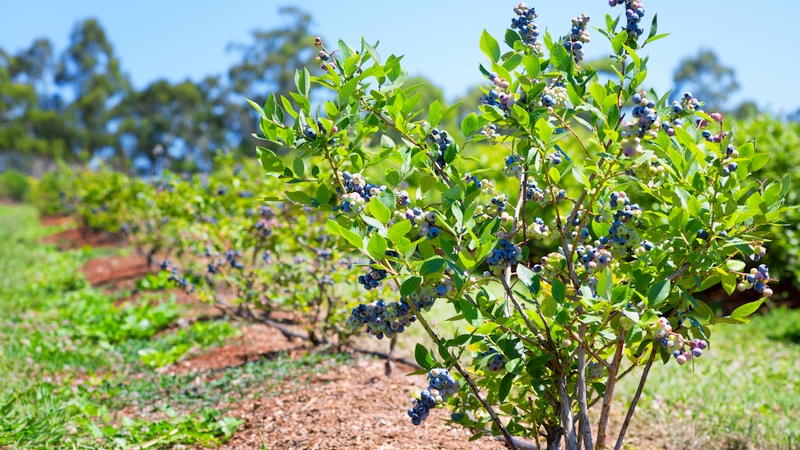Dormant Pruning Tips For Your Berries
 Why should growers prune blackberries and raspberries?
Why should growers prune blackberries and raspberries?
“Pruning increases berry size, improves air movement by thinning canes and [removes] old canes that are infected by disease and insects “ Richard Funt, professor emeritus of The Ohio State University says.
Here are my recommended pruning methods for various types of blackberries and raspberries in Ohio. You may take them with a grain of salt since there is a huge variation in different regions of the country.
Growers are encouraged to check out the Extension bulletins in their state for additional information.
Summer Red Raspberries
Heading back of canes (cutting back tops) should be done to a height of 4-1/2 to 5 feet tall. Do not remove more than 1/4 of the canes though. Heading back should be done after Feb. 15 to avoid winter injuries. Canes that fruited the year before and diseased canes should be removed at the base at the soil line. There are also major regional differences with pruning methods in different parts of the country and under different trellising methods and production methods.
Primocane Fruiting Red Raspberries
A complete removal of all canes at the soil line, preferably done in February, will turn a twice-fruiting type into a fall-bearing type. This approach saves labor, but may not make sense any more to growers, especially when spotted wing drosophila is a major pest in your area. Another way to prune primocane fruiting-type red raspberries is to thin floricanes to about 5 inches to 6 inches between canes or a density of 1.5 per square feet. Remove floricanes that fruited the year before at the soil line.

Richard Funt prunes off the tips of the canes that produced berries during the fall of the previous year. Funt owns Carobeth Berry Farm in Coshocton County, OH. (Photo credit: Gary Gao)
Floricane Bearing Black Raspberries
The laterals or side branches on floricanes, produced as a result of summer tipping, will need to be headed back to 8 inches to 12 inches long in the early spring. This tipping back of laterals should be done after the extent of winter injury can be determined, but before the buds swell and grow. It is still worth noting that Niwot, a new double-cropping black raspberry cultivar developed by Pete Tallman of Longmont, CO, will need to be treated differently than other black raspberry cultivars. Growers will need to do their own experiment to determine which approach makes the most sense in their area.
Purple Raspberries
Many purple raspberries are pruned like summer red raspberries, and are not headed back in summer. They are only headed back in winter after the cold temperatures have passed. Brandywine is a little different and can benefit from summer heading back. The fruiting laterals on the canes that were headed back in summer can be cut back to about 8-inches to 14-inches long.

Richard Funt uses a hedge trimmer to improve the efficiency of his pruning work. (Photo credit: Gary Gao)
Thornless Blackberries
Thornless blackberries that have not been damaged by cold temperatures need to have all laterals removed within 18 to 24 inches of the soil. These low-positioned laterals will produce fruit that will not be harvested or will be covered with soil. Next, head all laterals back to 12 to 18 inches. If the main shoot is excessively long, it can be cut back to give space to other plants. Thin out small diameter canes and leave four to six canes per plant.
“Prune after the harsh winter temperatures and winds. Stop pruning if temperatures will drop below 20°F,” Funt says. “Accelerate pruning if temperatures are to remain above 50°F for several weeks. Late February and all of March are best in Ohio. Finish pruning before leaf break.”
Kerry Sullivan, owner of Jacquemin Farms in Plain City, OH, takes Funt’s advice one step further.
“We normally wait until the worst of winter is over before we prune our blackberries. This is typically around late March to early April when we remove straw from our matted-row strawberries,” she says.
For More Information:
Here are several publications that can help you with your raspberry and blackberry production:
“Raspberries,” co-written and co-edited by Richard Funt and published by Center for Agricultural Bioscience International.
“Raspberry and Blackberry Production Guide for the Northeast, Midwest, and Eastern Canada,” Cornell University.
“Brambles —Production, Management, and Marketing,” Ohio State University.










